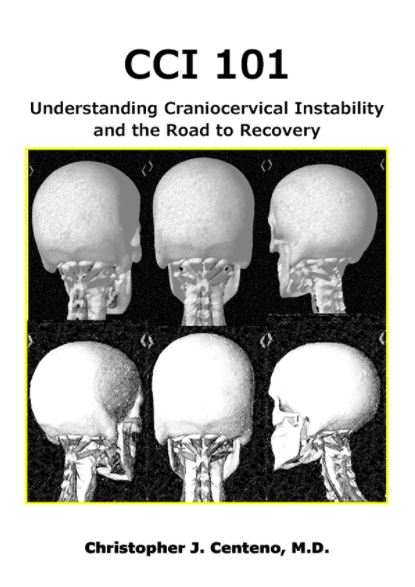Chances are, you’ve had to deal with a headache at one time or another, probably many times in fact. Why? A headache is most typically a symptom, and as such it can occur with a variety of issues—everything from a fever or migraine to the common cold or allergies and in rarer cases even more serious conditions such as tumors or strokes. More often than you probably realize, however, headaches or migraines (especially if they are chronic or recurring) are caused by problems in the neck, and, so to speak, stem cell therapy for migraines happens in the neck.
On Tuesday, we covered many different problems in the neck that, when left unaddressed, can cause chronic headaches. As a refresher, these include the following:
- Weak neck muscles
- Irritated neck nerves
- Loss of the cervical lordosis (normal neck curve)
- Neck ligament instability
- Neck joint injury
Today we’re going to look at some of the neck treatments you should consider if your physician determines your headaches stem from one of the neck problems above.
Restrengthen Weak Neck Muscles
The deep neck flexor muscles, like any muscle, can be strengthened, and there are many nonsurgical ways in which to do this. These include the following:
- Range-of-motion exercises for the neck (e.g., chin tucks, rotations, sidebending, etc.)— perform these very slowly with your arms at your sides twice a day
- Physical therapy, specialized for neck strengthening
- Orthobiologic injections (PRP, stem cells) in the neck joints or ligaments at the level of muscle weakness
If your weakened neck muscles are due to poor posture, you have to address your posture issues. Make a concerted effort to address your posture may help, but it’s unlikely to fully correct decades of bad posture. You may need a full reset, and, again, a good posture-based physical therapy program can help. We like and often recommend Egoscue before stem cell therapy for migraines.
If you have tight trigger points, these may be causing muscle weakness as well. A physical therapist well-trained in trigger-point dry-needling techniques using an acupuncture needle should be able to eliminate these tight trigger points. Learn more about this at kinetacore.com. This is not the same as traditional Chinese acupuncture, as treating trigger points is not within the scope of most acupuncturists’ skills.
Settle Irritated Nerves
Irritated neck nerves can often be treated with regenerative medicine, by injecting platelet lysate (concentrated from your own PRP) using precise ultrasound guidance. Platelet lysate is growth-factor-rich fragments of cells that initiate clotting, which stimulates and supports healing.
Restore Your Normal Neck Curve
Restoring your normal neck curve can often be accomplished with chiropractic treatments. The key is to find a chiropractor experienced in restoring the cervical curve. Idealspine has a chiropractor directory and should help you find an experienced chiropractor in your area.
If chiropractic care doesn’t fully correct your curve or only provides temporary or minimal pain relief, prolotherapy to tighten the ligaments at the back of the neck may help.
Reinforce the Neck Ligaments
If ligament instability is causing your headaches, there are a couple of possible treatment solutions. If the instability is being caused by weak neck muscles, first try the exercises listed under the muscle section above. If the exercises are painful or uncomfortable, you may need to treat the ligaments directly. This can be done under highly specialized and very precise imaging guidance of platelet injections into the unstable ligaments.
Repair Injuries to the Neck (Facet) Joints
Chiropractors, physical therapists, or osteopaths can often provide manipulative therapies that will relieve injured neck joints. If this doesn’t do the job, injecting the joints with your own concentrated platelets, using precise X-ray guidance may help. Injecting these higher-level cervical joints (the ones that generate headaches or migraines) requires a special level of expertise, however, so be careful and make sure your physician has the training to do this through the Interventional Orthopedics Foundation. There are only about 50 physicians in the U.S. who have performed cervical joint injections at the C0–C1 level in more than a hundred patients. At the Centeno-Schultz Clinic, we have performed several thousand of these procedures.
We can’t close this topic without mentioning the standard pain treatments we don’t recommend using to relieve chronic headaches. Nonsteroidal anti-inflammatory drugs (NSAIDs) and opioids are not only dangerous and addictive, one study found in some people they may not even relieve pain. Another common treatment to relieve pain is epidural steroid injections, but these, too, are riddled with toxic side effects and relief has been shown to diminish with each injection. Finally, Botox injections are used to treat chronic headaches as well, but these may just be furthering the muscle damage that led to your headaches in the first place.
The upshot? If you are dealing with chronic headaches, it’s imperative that your physician properly examines your neck to determine if a structure there may be damaged as well. Treating headaches without treating the source of the pain may provide temporary relief, but your headache is sure to come back. That’s why stem cell therapy for migraines happens in the neck.

